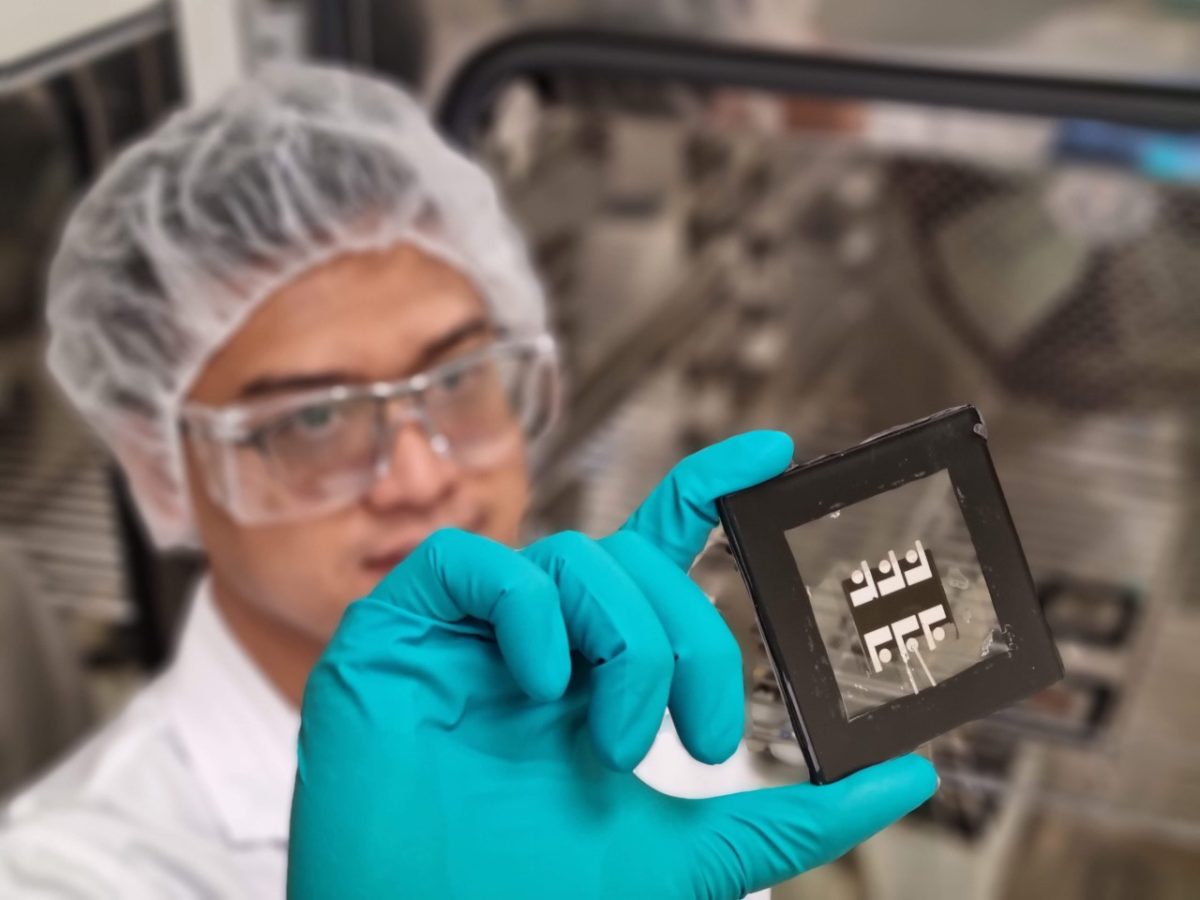Scientists led by Saudi Arabia’s King Abdullah University of Science and Technology (KAUST) have developed a perovskite solar cell based on a 2D/3D perovskite heterojunction that is claimed to retain over 95% of its initial efficiency after 1,000 hours at damp-heat test conditions.
“The study is not the first focusing on damp-heat passing perovskite solar cells, but it is the first to report an efficiency exceeding 20% after the damp-heat test, with industry compatible encapsulation methods,” the research's corresponding author, Erkan Aydin, told pv magazine.
The special heterojunction was fabricated by growing two-dimensional (2D) perovskite layers on the top surface of a 3D-perovskite, which is claimed to ensure defect passivation and eliminate ion migration. These layers were embedded between the 3D-perovskite surface and the opaque hole-selective top-contact stack. The 2D-perovskite fragments were dimensioned by tuning the annealing conditions with higher temperatures. This resulted in more efficient charge transfer at the 2D/3D perovskite interface and the electron-selective layer. “In addition, the effects of 2D-perovskite capping layers also enhanced the resilience against moisture of 3D-perovskite film,” the scientists highlighted.
The cell was fabricated with a substrate made of glass and indium tin oxide (ITO), the 2D layers, the 3D perovskite layer, an electron-selective layer, a buffer layer based on bathocuproine (BCP), and silver metal contact.
The device achieved a power conversion efficiency of 24.7%, an open circuit voltage of approximately 1.20 V, and fill factor of around 82%. “Our 2D-perovskite passivation simultaneously served as ion-migration-blocking, moisture-oxygen ingress barriers, and defect passivation layers, particularly at elevated operating temperatures,” the research team emphasized. “Our results represent the successful encapsulation of PSCs passing industry-relevant damp-heat test according to the IEC 61215:2016 protocol.”
According to the academics, the cell was able to achieve an efficiency of over 19% after 1,000 hours of damp-heat test. “There was no substantial change in the structural and optical properties of the 2D-perovskite passivation films (both 3D and 2D perovskites) after over 500 hours thermal annealed at 85 degrees Celsius, confirming the robustness of our 2D-perovskite passivation approach,” they concluded.
The solar cell is described in the paper Damp heat — stable perovskite solar cells with tailored-dimensionality 2D/3D heterojunctions, published in Science.
This content is protected by copyright and may not be reused. If you want to cooperate with us and would like to reuse some of our content, please contact: editors@pv-magazine.com.




3 comments
By submitting this form you agree to pv magazine using your data for the purposes of publishing your comment.
Your personal data will only be disclosed or otherwise transmitted to third parties for the purposes of spam filtering or if this is necessary for technical maintenance of the website. Any other transfer to third parties will not take place unless this is justified on the basis of applicable data protection regulations or if pv magazine is legally obliged to do so.
You may revoke this consent at any time with effect for the future, in which case your personal data will be deleted immediately. Otherwise, your data will be deleted if pv magazine has processed your request or the purpose of data storage is fulfilled.
Further information on data privacy can be found in our Data Protection Policy.